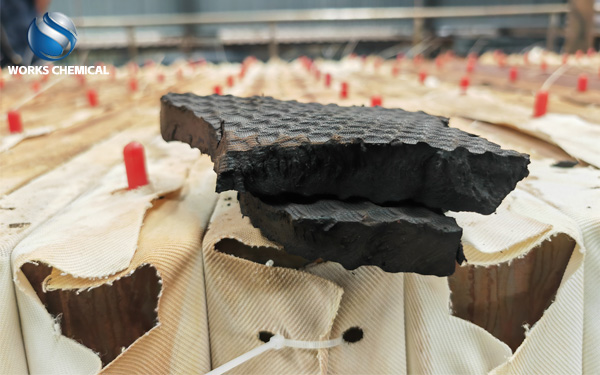
In the complex process of sewage treatment, sludge treatment has always been a thorny problem. A large amount of sludge rich in water and pollutants, if not properly treated, will not only occupy a large amount of land but also cause secondary pollution to the environment. With increasingly strict environmental protection requirements, an innovative product - sludge efficiency enhancer - is gradually emerging, bringing new opportunities to sludge treatment.

The dilemma of sludge treatment: Limitations of traditional methods
Traditional sludge treatment methods, such as physical dewatering and biological degradation, have many drawbacks. Take physical dewatering as an example. Relying solely on mechanical squeezing, it is difficult to significantly reduce the moisture content of sludge. The treated sludge still contains a large amount of water, has a huge volume, and the subsequent transportation and disposal costs are high. Although biodegradation can decompose organic matter to a certain extent, it takes a long time and is greatly affected by environmental factors. In cold winters or complex water quality, the degradation efficiency is greatly reduced. More importantly, traditional methods often fail to fundamentally change the structural characteristics of sludge, resulting in the dewatering effect being difficult to break through the bottleneck.
Sludge Efficiency Enhancer: Mechanism of Action and Composition Secrets
Sludge efficiency enhancer is a carefully developed compound agent, whose core components include inorganic compounds, surface structure modifiers, cell wall breakers, degreasing agents, etc. These ingredients each perform their own functions and work together to exert powerful effects. Surface structure modifiers can rapidly act on the surface of sludge particles, altering their surface charge distribution and structural morphology, reducing the repulsive force between sludge particles, and promoting particle aggregation. The cell wall disruptor is like a tiny "sharp blade", precisely breaking through the cell walls of microorganisms in the sludge, releasing intracellular water, and greatly enhancing the dewatering performance of the sludge. Degreasing agents are responsible for removing oily substances from sludge and reducing their hindrance to the dewatering process. Inorganic compounds further regulate the chemical properties of sludge and enhance the overall treatment effect. Through this series of complex and exquisite chemical reactions, the sludge enhancer has successfully broken through the obstacles of traditional dewatering.
The application effect is remarkable: data testifies to strength
In practical applications, sludge enhancers have demonstrated remarkable effects. Practical data from numerous sewage treatment plants show that by using sludge enhancers in combination with equipment such as plate and frame sludge presses, the moisture content of sludge, which originally had a moisture content of over 90%, can be successfully reduced to 40%-60%, achieving a significant reduction in sludge volume. Taking a large-scale municipal sewage treatment plant as an example, after the introduction of sludge enhancers, although the daily amount of sludge treated remained unchanged, the volume of sludge after dewatering was reduced by nearly half, significantly lowering the difficulty and cost of subsequent disposal methods such as landfill and incineration. Not only that, due to the improvement of sludge properties, the efficiency of the sludge pressing process has been significantly enhanced, the operating time of the equipment has been shortened, the production efficiency has increased several times, and the labor cost has also decreased accordingly.
Green environmental protection advantages: In line with the concept of sustainable development
From an environmental protection perspective, sludge enhancers also perform exceptionally well. On the one hand, during its application, there is no need to add a large amount of traditional agents such as lime and iron salts, reducing the potential harm of chemical agents to the environment and lowering the risk of secondary pollution during the sludge treatment process. On the other hand, the treated sludge has stable properties and is more conducive to subsequent resource utilization, such as making building materials and soil conditioners, achieving a transformation from "pollutant" to "resource", which is in line with the current environmental protection concept of sustainable development.
Sludge enhancers, with their unique mechanism of action, remarkable application effects and green environmental protection advantages, are becoming indispensable key products in the field of sewage treatment. It is believed that with the continuous advancement and wide application of technology, sludge enhancers will play a greater role in environmental protection and help us create a cleaner and more beautiful ecological environment.